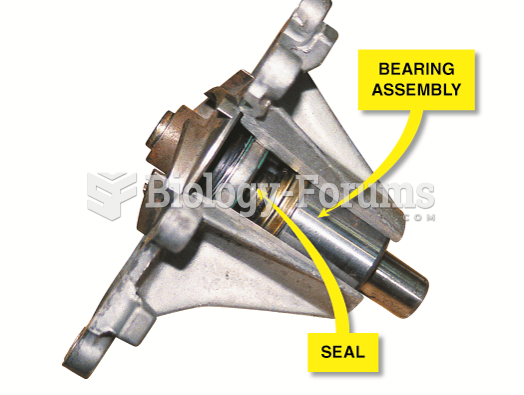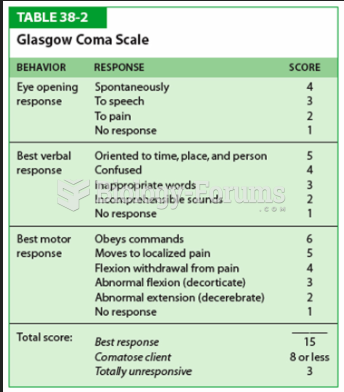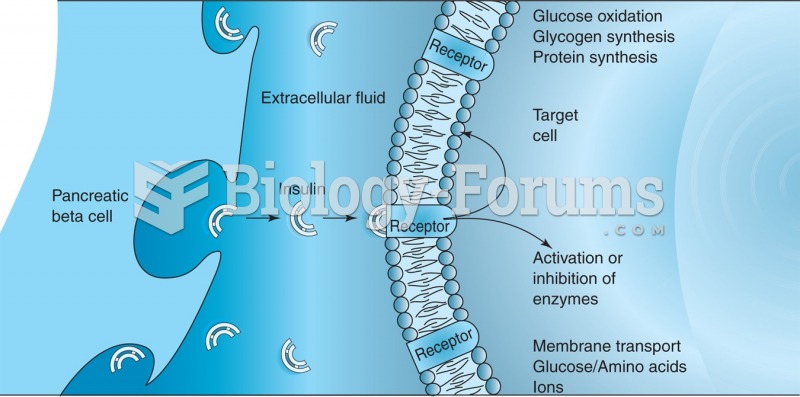|
|
|
Cytomegalovirus affects nearly the same amount of newborns every year as Down syndrome.
When taking monoamine oxidase inhibitors, people should avoid a variety of foods, which include alcoholic beverages, bean curd, broad (fava) bean pods, cheese, fish, ginseng, protein extracts, meat, sauerkraut, shrimp paste, soups, and yeast.
Always store hazardous household chemicals in their original containers out of reach of children. These include bleach, paint, strippers and products containing turpentine, garden chemicals, oven cleaners, fondue fuels, nail polish, and nail polish remover.
Patients who cannot swallow may receive nutrition via a parenteral route—usually, a catheter is inserted through the chest into a large vein going into the heart.
Over time, chronic hepatitis B virus and hepatitis C virus infections can progress to advanced liver disease, liver failure, and hepatocellular carcinoma. Unlike other forms, more than 80% of hepatitis C infections become chronic and lead to liver disease. When combined with hepatitis B, hepatitis C now accounts for 75% percent of all cases of liver disease around the world. Liver failure caused by hepatitis C is now leading cause of liver transplants in the United States.
 the comet Encke riding along its pebbly trail of debris (long diagonal line) between the orbits of M
the comet Encke riding along its pebbly trail of debris (long diagonal line) between the orbits of M
 A cutaway of a typical water pump showing the long bearing assembly and the seal. The weep hole is ...
A cutaway of a typical water pump showing the long bearing assembly and the seal. The weep hole is ...
 AC ripple at the output terminal of the battery is more accurate than testing at the battery due ...
AC ripple at the output terminal of the battery is more accurate than testing at the battery due ...




